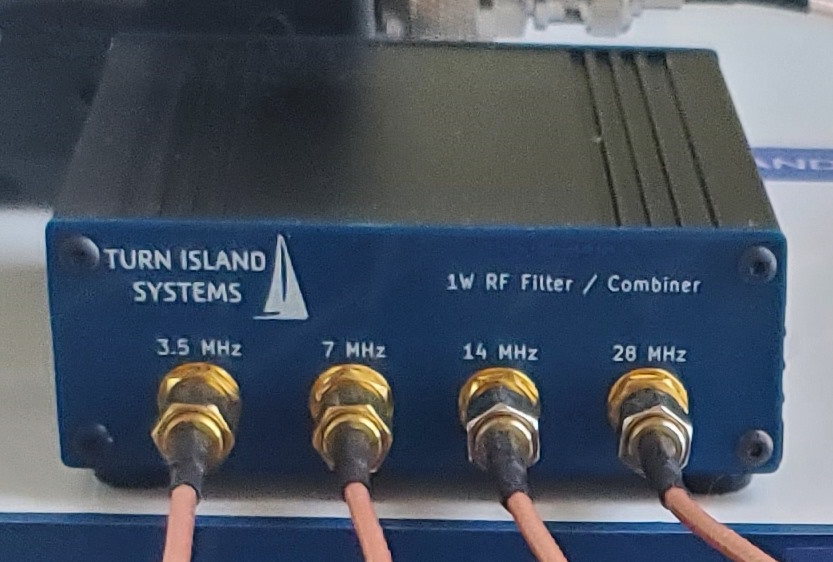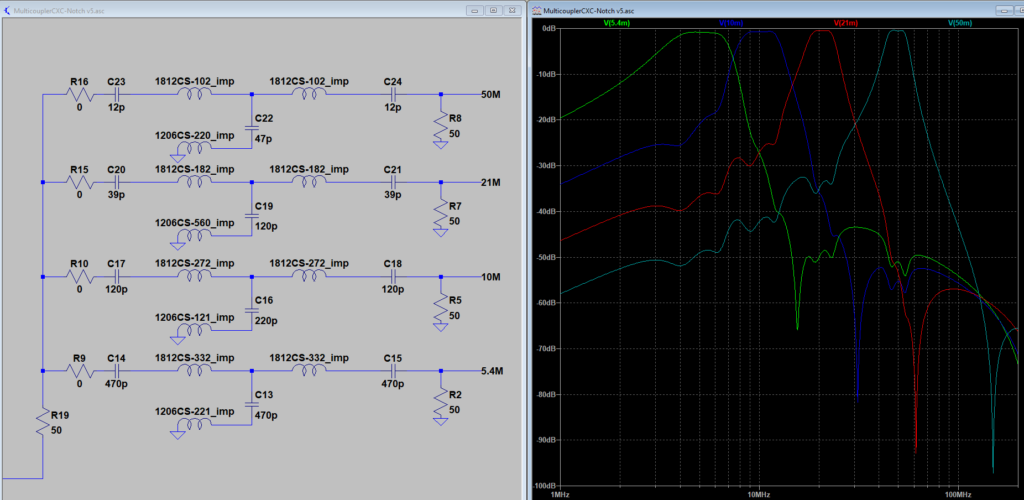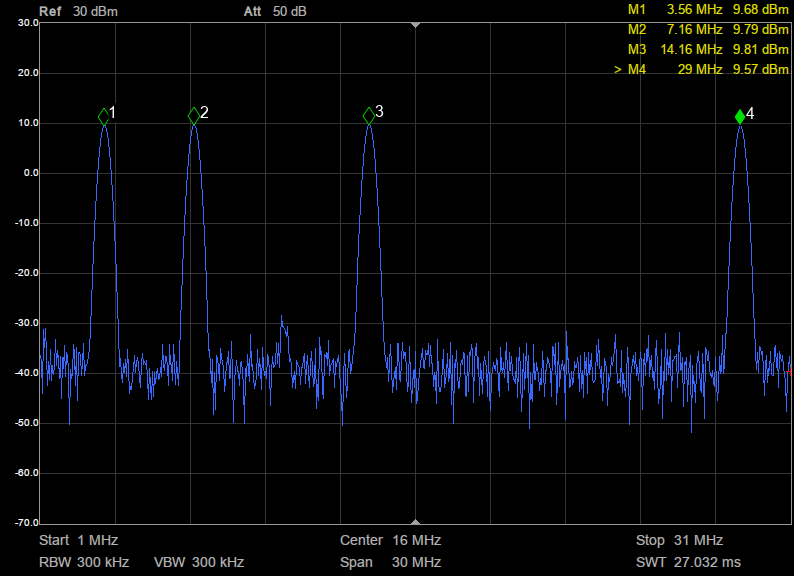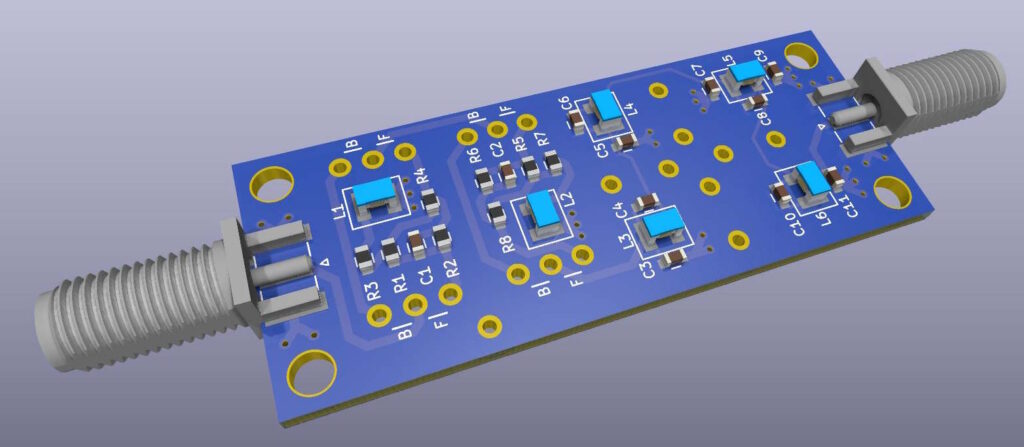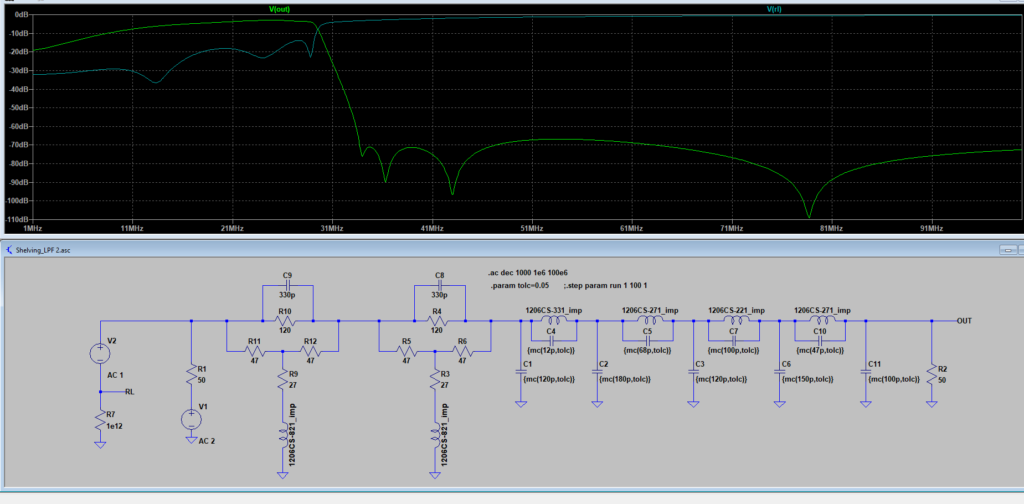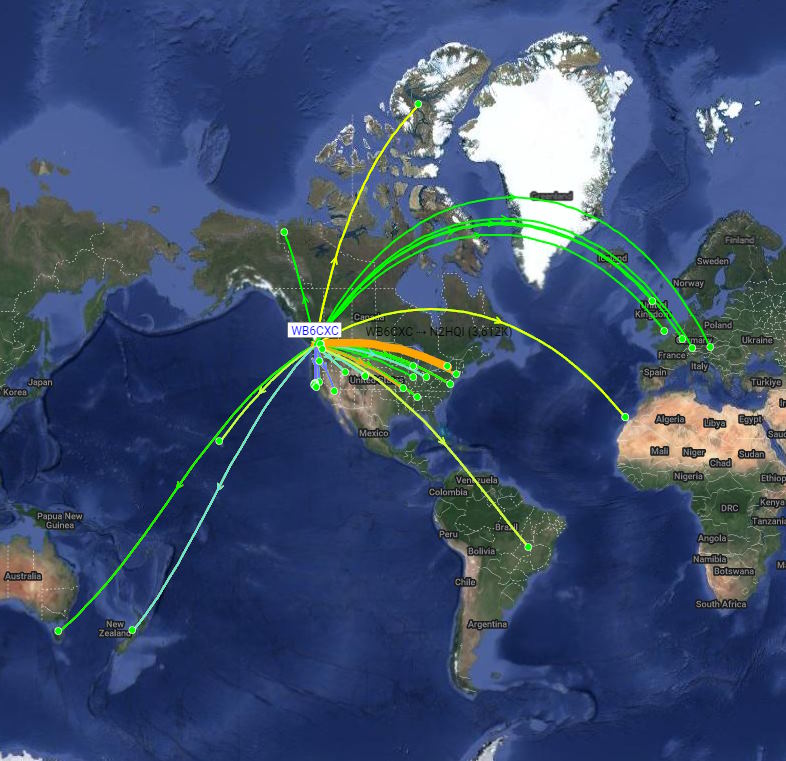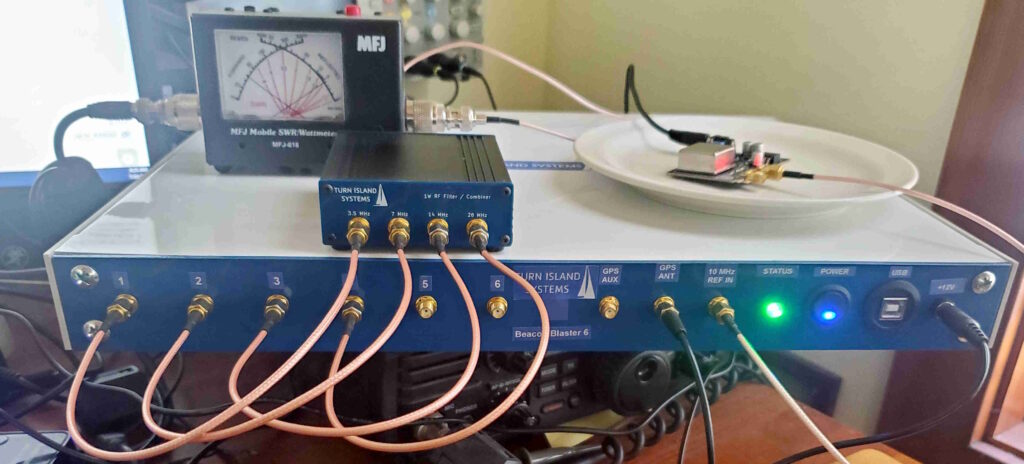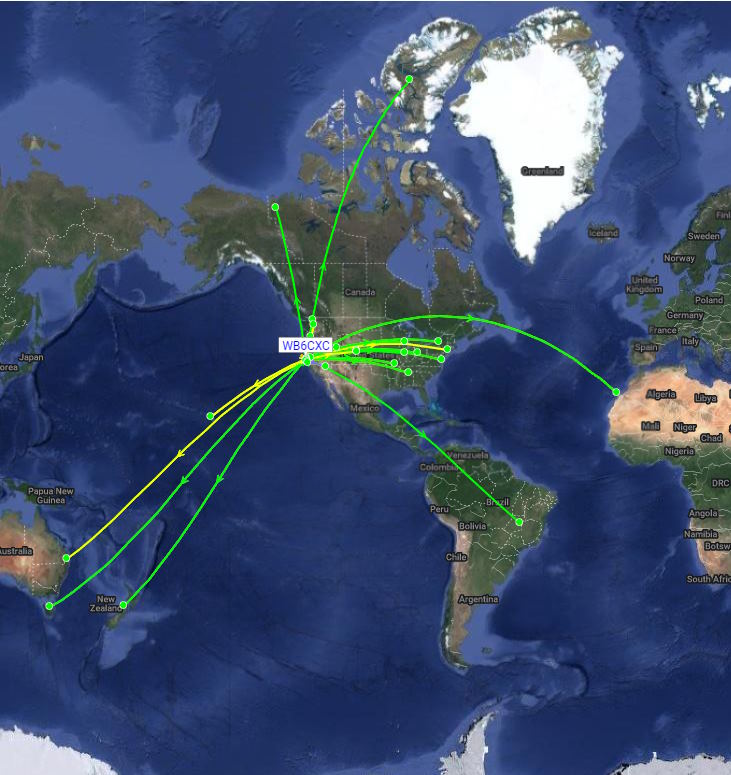The assembled Shelving/LPF boards were delivered yesterday, and the “missing” inductor was delivered today (one inductor was not in stock at JLCPCB so I had then assemble it without that one part; I ordered that inductor from DigiKey). Amazingly fast service from JLCPCB! So I soldered on that inductor and the SMA connectors and did some testing:

This board has options where the shelving filter can be bypassed, so I tried that first. The results were much better than I had expected:
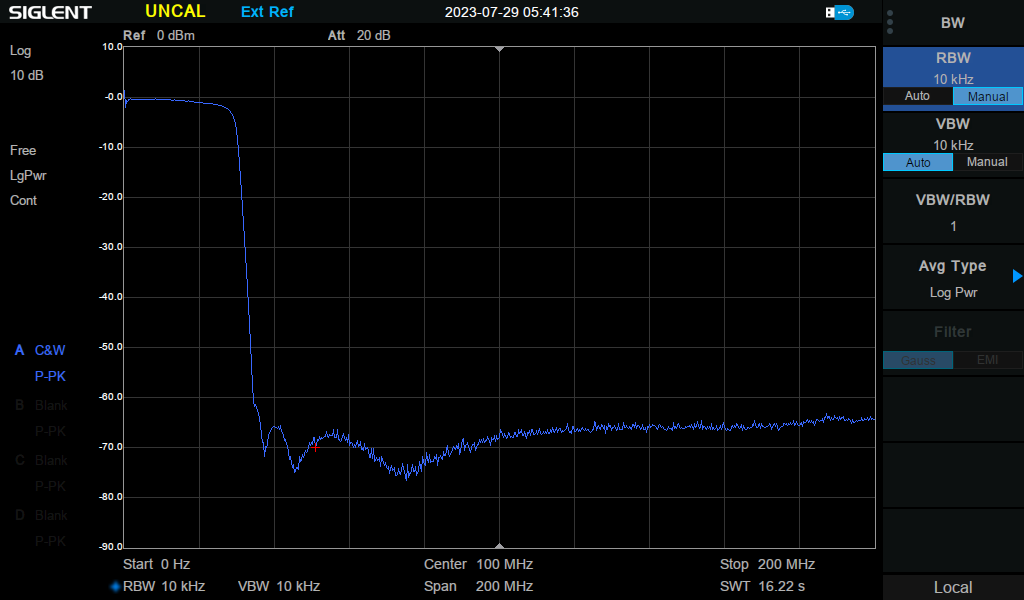
This essentially matches the performance of the LTSpice simulation (which used the Coilcraft inductor models, not the similar Murata inductors on the board. This shows a reasonably sharp rolloff with better than 60dB stopband attenuation. I am seeing no obvious inter-stage coupling (which can be a concern when using unshielded solenoid inductors.)
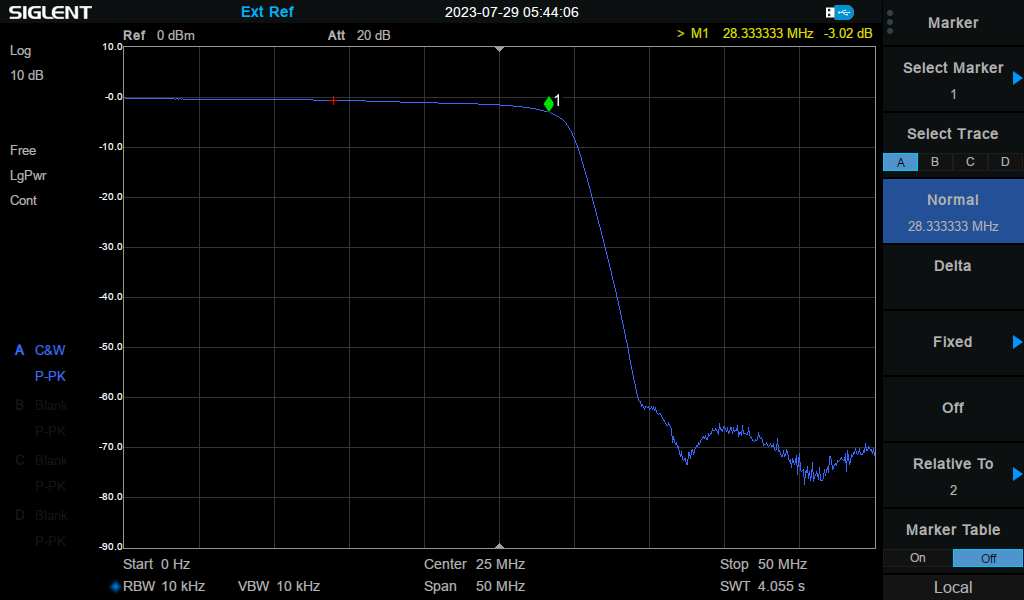
Here is a closer look at the roll-off performance. The loss at 1MHz is essentially zero, while the -3dB point is about 28 MHz. We may want to push this corner frequency a bit higher…
There are some spurious responses above 240 MHz. I suspect that these won’t be a problem because the SDRs that will be using these filters will already have an anti-aliasing filter that should adequately knock down these frequencies. I could guess that these come from inter-stage trace inductance, but that’s just a guess:
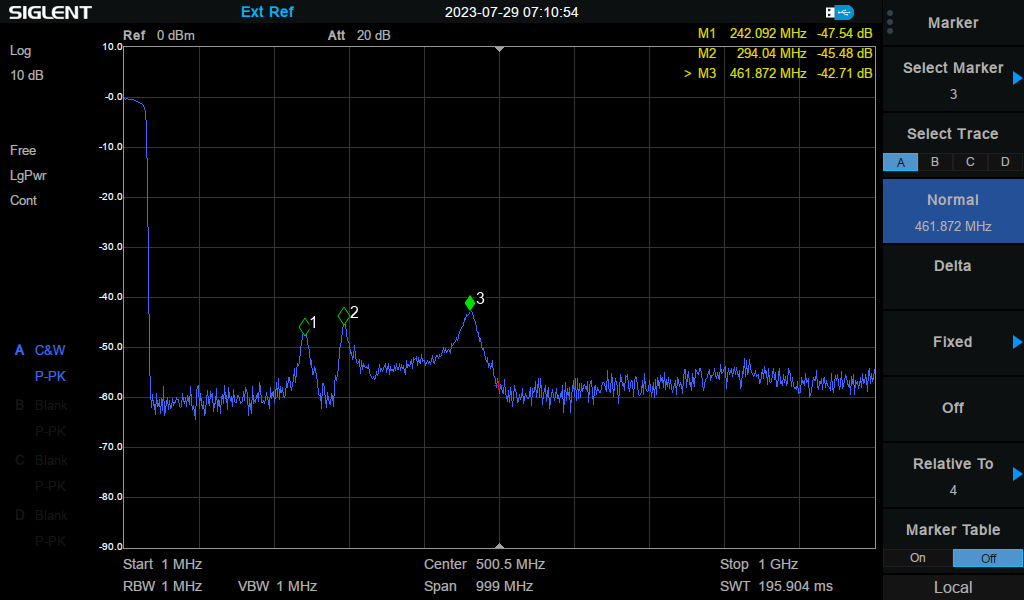
With the shelfing filters in place, the low-frequency attenuation is about 20dB:
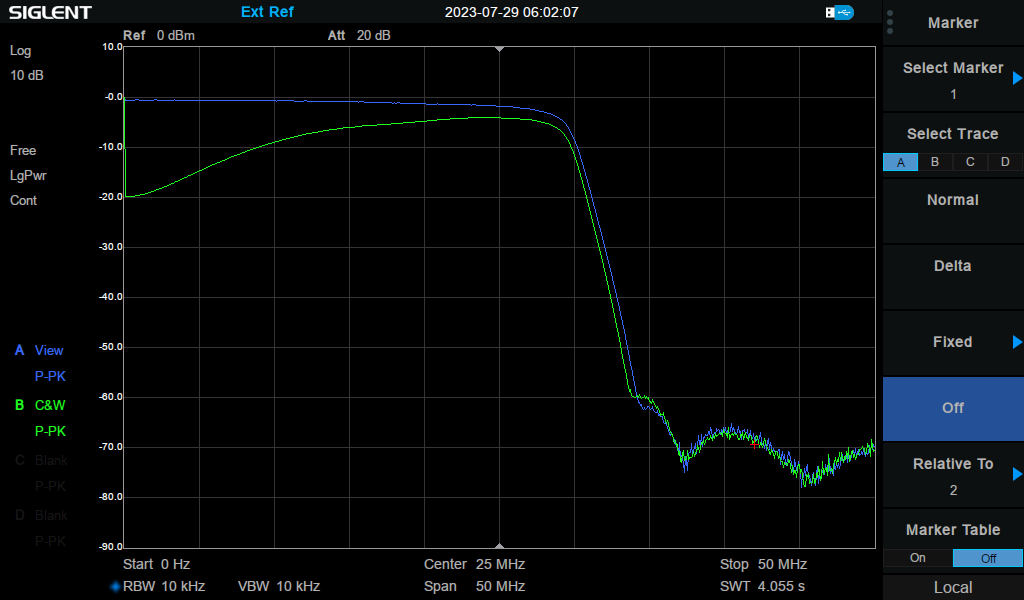
There is also extra attenuation above 25 MHz, which suggests that we shift the shelving mid-point frequency slightly lower to reduce higher-frequency attenuation.
In conclusion, I am quite pleased with the overall design and layout of this board. Tweaking the frequencies (if necessary) will be trivial.

